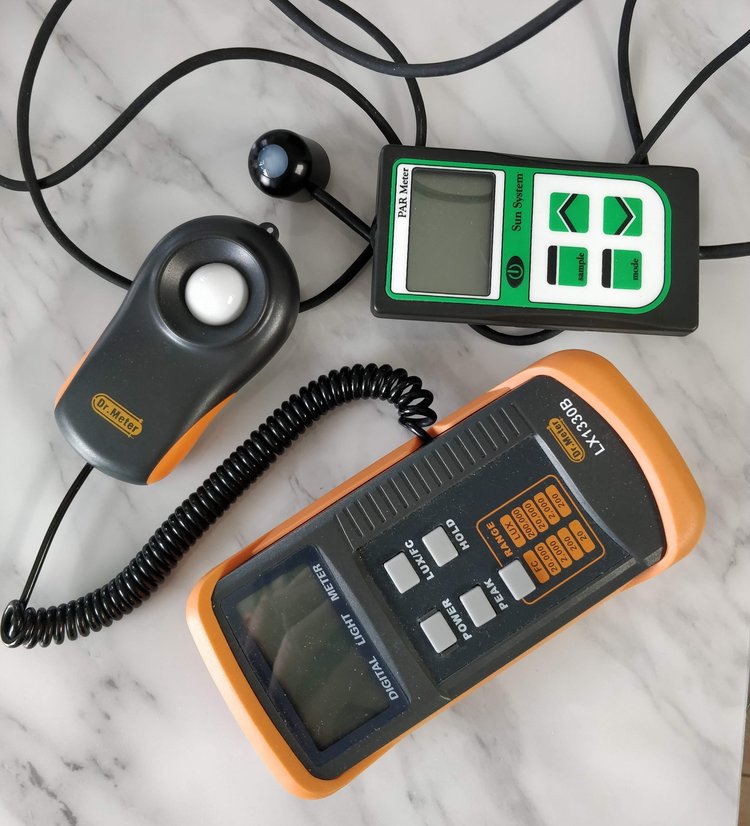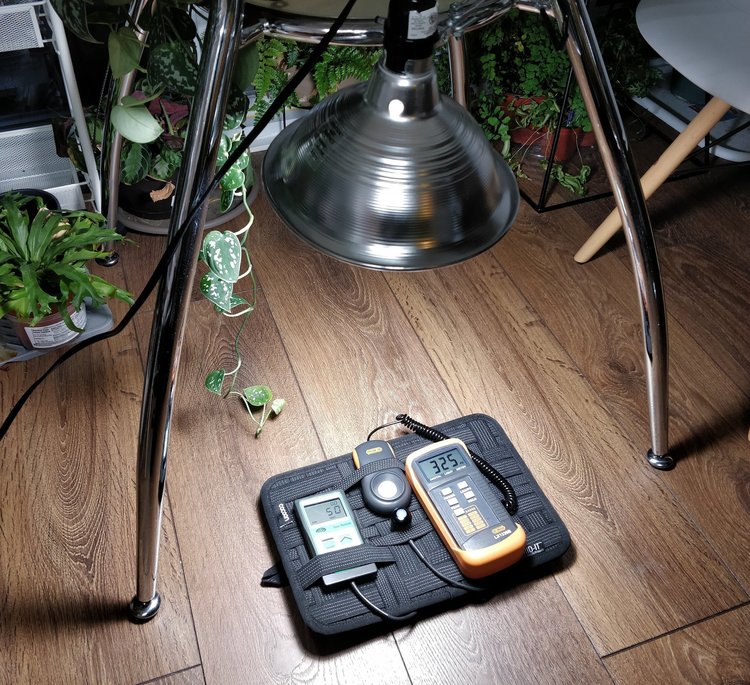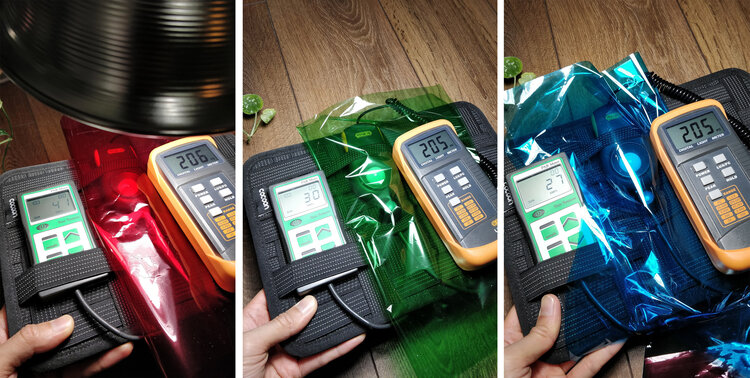People who know the science of photosynthesis will say that ‘photosynthetically active radiation’ or PAR is the true measure of light for plants. They’ll say that measuring perceived brightness in lux (lumen per square meter) or foot-candles (lumen per square foot) is less accurate because perceived brightness is most sensitive in the green region of the spectrum (550 nm), whereas PAR includes the farther ends of the visible spectrum (blue – around 400 nm and red – around 700 nm).
Theoretical Discrepancies
Knowing this, we must consider: what kind of discrepancy could arise if we were to only measure lux/fc and not PAR? Is there a situation where one type of meter would tell us something different from the other? And would it ultimately matter to our plants?

It’s all about being sensitive to different colors:
When it comes to natural light, either directly from the sun or ambient light during the day (that is, indirect light), PAR and lux/fc are equivalent.
If we’re dealing with colored grow lights, the answer is simple: don’t ever use a green grow light. A lux/fc meter would tell you a green light is bright but the PAR meter would say there isn’t much useful light here – in theory. But since I have both types of meters, why don’t we try an experiment…
Experiment
In a rough, qualitative manner, here’s my hypothesis:
- Red or blue light will measure low on a lux/fc meter but high on the PAR meter
- Green light will measure high on a lux/fc meter but low on the PAR meter

Method: Using color filters to narrow the wavelengths of light reaching the sensors, I moved the sensors at a distance from the light source to get the same foot-candle reading across all colors while seeing what the PAR meter would display.

Red filter: 206 foot-candles; 41 μmol/(m²⋅s)
Green filter: 205 foot-candles; 30 μmol/(m²⋅s)
Blue filter: 205 foot-candles; 27 μmol/(m²⋅s)
Interpretation: when you normalize for perceived brightness (foot-candles), the red light was the only color to show a discrepancy – that the lux/fc meter was not very sensitive to red light. Surprisingly, the green filter did not lower the PAR value as I would have thought.
What does this mean for houseplant parents?
After this analysis, let me give you 2 reasons why foot-candles will suffice for casual houseplant growers (like me):
- For a red LED, the direction of error is like a safety factor – the lux/fc reading is lower than the actual PAR, which is fine. The other way around would be worse: the lux/fc reading makes you think the light is fine but the PAR is actually less – this would be bad.
- When dealing with natural light or white colored grow lights, foot-candle readings will be roughly correlated to PAR meter readings…one sensor will not be “more accurate” than the other. A brighter light will give a higher reading on both lux/fc and PAR meters.
Finally, on a practical note, while I do have both types of light meters, I couldn’t justify recommending a three hundred dollar device when a 40 dollar device will do. Unless you’re a commercial grower who has a large proportion of red LEDs and needs a specific yield from a crop, you won’t be led astray using foot-candles.
Affiliate links – thank you SO much for supporting the work of House Plant Journal!
A practical light meter for houseplant parents – regular lux/fc meter.
A super-fancy PAR meter – Sun Systems PAR Meter.
For next time: the only quantitative way to answer the question “how much light is my plant getting?” is with DLI (Daily Light Integral…and why I’ve never needed to answer that question)

